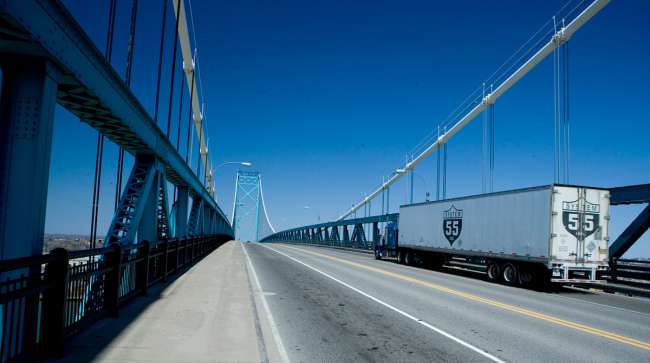Staff Reporter
Canadian ELD Mandate Would Improve Safety, Efficiency, Industry Stakeholders Say

Mandating electronic logging devices in Canada would separate conscientious fleets from those who do not prioritize safety, according to Stephen Laskowski, president of the Ontario Trucking Association and the Canadian Trucking Alliance.
Unlike the United States, where the federal mandate to implement ELDs takes effect Dec. 18, Canada has yet to mandate the devices.
YOUR GUIDE TO THE MANDATE: Downloadable PDF.
Laskowski, who spoke during a webinar hosted by Omintracs on Nov. 27, said he expects the Canadian government to make an announcement in the Canada Gazette about an ELD enforcement deadline before the end of the year. Similar to the Federal Register, the Gazette is an archive of proposed and official regulations.
ELDs will level the playing field: Stephen Laskowski, president Canadian Trucking Alliance @ #sts17 — Lou Smyrlis (@LouSmyrlis) October 11, 2017
Once the Canadian government proposes a rule, the public usually has 60 days to comment on the proposal, Laskowski said. After a few months of review, the government will then publish a final rule. Laskowski said he hopes a final rule will arrive by mid-2018 and that an ELD mandate will be fully in effect by the end of 2019.
“The ELD mandate is the hope of many carriers in Canada — that this is the great cleansing of our industry, that the level playing field comes, that carriers now compete in a fair and compliant world where management practices and service, as opposed to finagling the regulations, is how one succeeds,” Laskowski said. “It’s a wonderful opportunity for carriers to do it the right way to thrive and for those who haven’t been doing it the right way to change or to exit the industry.”
He said ELDs will level the playing field in the trucking industry because they will make it impossible for drivers to cheat on their hours of service.
Tom Cuthbertson, vice president of regulatory affairs at Omnitracs, and on the webinar with Laskowski, said ELDs will improve safety because they alert a driver when he or she is nearing hours-of-service limits and needs to take a break.
The ELD mandate is the hope of many carriers in Canada — that this is the great cleansing of our industry.
Stephen Laskowski, Ontario Trucking Association president
In addition to improving equality in the industry, Laskowski said ELDs will reduce inefficiencies that occur with third-party logistics groups, such as backups at loading docks and delayed loading times. “What’s beginning to happen now is companies, drivers, shippers and 3PLs are having real conversations about removing these inefficiencies, the cost of these inefficiencies and their impact on drivers and how the supply chain needs to be reworked to not only retain drivers, but to eliminate these inefficiencies, because they can simply no longer be absorbed.”
Although Canadian trucking companies are not required to have the devices installed, those fleets operating in the United States must have ELDs. Cuthbertson said that ELD training is vital to members of the Canadian trucking community as the U.S. mandate draws near. Besides classroom training, he said fleets should give their drivers 10 or 15 minutes in the cab with the new devices.
Training should extend to all members of the trucking industry, not just people behind the wheel, according to Cuthbertson.
“The drivers are important and it’s key for them to understand what’s in these mandates. It’s just as important that the safety managers understand what’s in these regulations, the dispatch people, and even the mechanics,” Cuthbertson said. “The education process is on every piece of the organization. It’s not only the driver.”
Attracting young drivers is an important issue in the neighboring countries as the trucking industry faces a driver shortage. The shortage ranked No. 1 on the American Transportation Research Institute’s most recent list of critical issues. American Trucking Associations reported that the driver shortage could reach 50,000 by the end of the year, and the shortfall could surpass 174,000 by 2026 if current trends continue.
In 2016, the Ontario Trucking Association established the Leadership Education and Development committee, which offers educational and outreach programs to attract young people to the industry. Laskowski said the next generation of drivers is academically focused and offers a “bright future.”
“Driver retention is an issue here in Canada, but I would say driver attraction is even more of an issue. If we can create through compliance a better level playing field, we’ll create better competition in our industry,” Laskowski said. “If we create better competition in our industry, we’ll have a better working environment. The next generation is just as good if not better than their predecessors, which is a great thing for trucking. We continue to evolve as an industry.”


